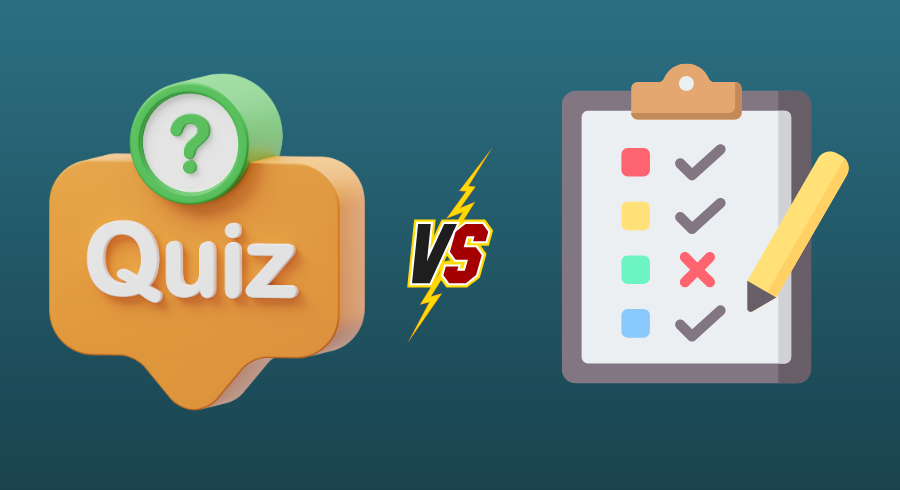Introduction
Selecting the right assessment tool is crucial for organizations looking to improve employee performance, streamline training, or conduct effective evaluations. In 2025, assessment software has evolved with more advanced features and capabilities, making it vital for businesses to create a comprehensive assessment tool checklist to guide their decision-making process.
With so many options available, it can be challenging to identify the best tool that suits your organization’s needs. The right assessment software not only saves time but also ensures better results through advanced features like real-time analytics, customizability, and scalability. In this article, we will explore the essential elements of an assessment tool checklist, key features to look for, and how you can choose the best software in 2025.
Why an Assessment Tool Checklist is Crucial in 2025
In 2025, businesses are increasingly relying on assessment software to evaluate employee performance, facilitate learning, and measure the effectiveness of training programs. A well-defined assessment tool checklist is essential for decision-makers to ensure they choose the right solution. Without one, organizations may struggle with misalignment between their needs and the features offered by various tools.
The Changing Landscape of Assessments
Manual assessments are becoming less common as organizations move towards digital tools that provide real-time data analysis and improve the overall evaluation process. The use of assessment software has shifted from just simple surveys or questionnaires to more sophisticated, AI-powered platforms that provide deeper insights into employee capabilities and training gaps.
A checklist helps businesses stay focused on the most important features, reducing the risk of choosing a tool that lacks scalability, flexibility, or integration capabilities. With a clear framework, you can compare tools based on what matters most—whether it’s budget, customization options, or data security.
Key Features to Look for in Assessment Software for 2025
When building an assessment tool checklist, it’s important to focus on the core features that can maximize your ROI and improve your assessment process. Here are the key features you should consider when evaluating assessment software for 2025:
1. Customizability and Flexibility
A good assessment tool should allow for flexibility in creating assessments that suit your unique business needs. Look for software that supports custom templates, question types, and branding. The ability to personalize assessments ensures they align with your company’s culture and goals.
2. Real-Time Analytics & Reporting
Assessments are only valuable if they provide actionable insights. Real-time analytics allow you to track employee progress and performance instantly. Look for tools that offer detailed reports with visual representations of the data to help you make informed decisions.
3. Integration Capabilities
One of the most critical features for 2025 is integration. Your assessment software should seamlessly integrate with other business tools such as Learning Management Systems (LMS), Human Resources Management Systems (HRMS), or Customer Relationship Management (CRM) systems. This enables smooth data flow across platforms, enhancing productivity and eliminating data silos.
4. User Experience (UX)
Both the administrator and the end-user experience are important. The software should be intuitive and easy to navigate for both HR teams and employees. A tool that is easy to use can improve participation rates and reduce errors in the evaluation process.
5. Security & Compliance
Data security is a top priority. Ensure that the assessment software you choose complies with relevant data protection laws, such as GDPR in Europe or CCPA in California. Look for features like data encryption, secure access controls, and user authentication to protect sensitive information.
6. AI and Automation
AI-powered assessments offer a level of efficiency and accuracy that manual methods simply cannot match. From automating scoring to providing personalized feedback, AI can save time while ensuring more objective and precise evaluations.
Tool Comparison: How to Assess Your Options
Once you’ve identified the features that are most important for your organization, the next step is to compare different tools. Here’s a breakdown of how to effectively conduct a tool comparison:
Comparing Popular Assessment Software Options
When evaluating different assessment software options, consider these top contenders in 2025:
- Compare2Compete: Known for its customizable templates, real-time analytics, and seamless integration, Compare2Compete offers an all-in-one solution for businesses of all sizes. It excels in scalability, allowing companies to expand their assessments as their needs grow.
- SurveyMonkey: A reliable tool for simple surveys and quizzes, SurveyMonkey provides basic analytics and reporting. While it lacks the depth of AI integration, it’s an excellent choice for smaller businesses or those with basic assessment needs.
- Microsoft Viva: A robust platform designed for employee well-being and performance tracking, Microsoft Viva integrates seamlessly with other Microsoft products, making it a great choice for organizations already using Office 365.
Key Features to Compare:
- Customization options for creating tailored assessments.
- Pricing structure based on user size and features.
- Ease of integration with existing business systems.
- Security measures to ensure compliance with regulations.
How to Make the Final Decision: Choosing the Best Assessment Tool
After narrowing down your options through a tool comparison, the next step is to make a final decision. Here’s how you can ensure that you pick the best assessment software for your organization:
Considerations for the Final Decision:
- Budget: Make sure the pricing aligns with your budget. Don’t just go for the cheapest option; consider the ROI in the long run.
- Scalability: Choose a tool that can grow with your organization. Will it still meet your needs as your business expands?
- Vendor Support: Assess the customer support and training offered by the vendor. Are they available for troubleshooting or implementation?
- Trial Periods: Many tools offer trial periods or demos. Take advantage of these offers to test the software before making a commitment.
Tools & Resources to Streamline Your Selection Process
Using Compare2Compete can simplify the decision-making process by providing an in-depth tool comparison of various assessment platforms. It offers:
- Side-by-side comparisons of features, pricing, and user ratings.
- Detailed reviews and feedback from other businesses in your industry.
- Free trials and product demos to help you experience the software before committing.
By using Compare2Compete, you can save time and ensure you’re selecting the best assessment tool for your specific business needs.
Conclusion
Choosing the right assessment tool is essential for businesses in 2025, and having a comprehensive assessment tool checklist will ensure you make an informed decision. Focus on features like customizability, real-time analytics, integration, and AI capabilities to find the tool that best fits your needs. By using Compare2Compete for your tool comparison, you can easily evaluate the options available and choose the software that offers the best value and scalability for your organization.



